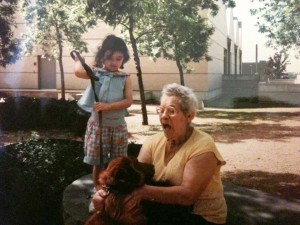
This fall is extra bittersweet. For seniors it is our last as undergraduates on this beautiful campus. And for me, it is the end of a long history at Marquette University.
I grew up on this campus. My dad started working here as a philosophy professor in 1990 so by the time I was born in 1992, I was wearing a Marquette onesie.
My mother finished her bachelors in anthropology at Marquette in 1997 while she was pregnant with my younger brother. My younger sister was baptized at the Joan of Arc Chapel in 2000.
As a kid, instead of staying home sick, I hung out in my dad’s office in Coughlin Hall, coloring and putting together dinosaur puzzles, things he has in his office to this day.
At lunchtime we would walk to the AMU cafeteria where I would always get a grilled cheese and fries. As we strolled around campus I would admire all the big kids walking to class, always looking forward to one-day walking among them.
Christmas parties where spent with the Marquette philosophy department. Colleagues of my dad still recognize me and greet me on campus, telling me stories about “those days.”
The university grew with me over the years. I watched the construction of Raynor Memorial Library in 2003, Zilber Hall in 2009 and the Engineering Hall in 2011.
Contributing to the “110 things for 110 Years of the Marquette Journal” article on page 24 let me explore a history of Marquette even further than I had known. By looking through the university archives for historical photos. It gave me a new sense of appreciation for Marquette and made myself proud to be a part of her history.
This school year may be the end of my experience at Marquette, but for my three younger siblings, for whom college is not far off, Marquette will have a lot to offer and my family’s history with this university will continue. And as they start school years from now, I’ll have the excuse to come visit this beautiful fall campus again.
Hopefully all seniors can positively reflect on their time at Marquette this fall. Learn more about Marquette’s and the Journal’s history on page 24.
